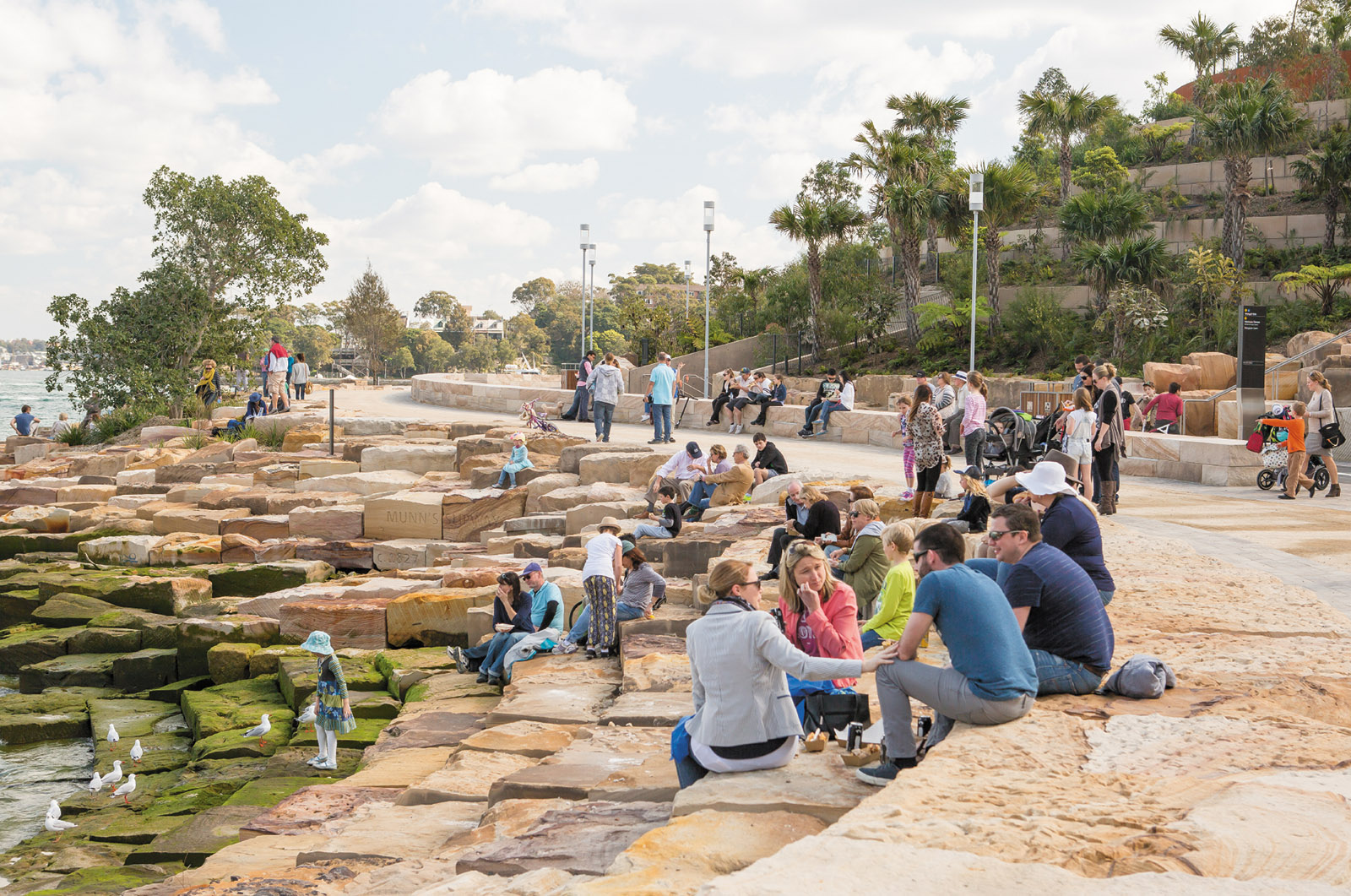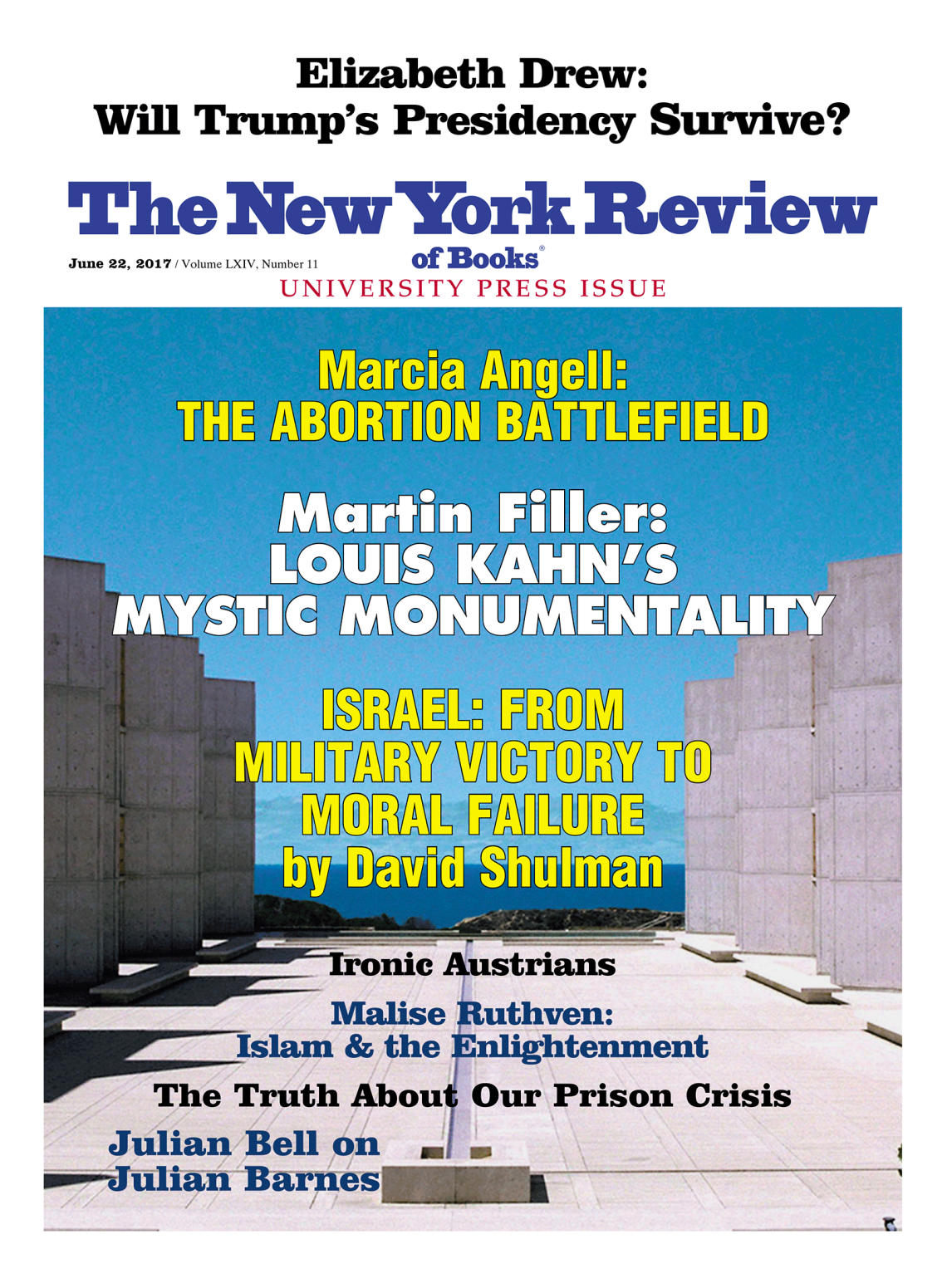The creation of an expansive, charming public space at the heart of a great commercial city is a rare event. Sydney’s Barangaroo Reserve, which opened in August 2015, joined New York’s High Line and London’s East End Olympic redevelopment as a landmark public park that helps define a major metropolis’s sense of place. Barangaroo forms the northwestern section of Sydney’s main business district and was previously part of the Port of Sydney. The relocation of industrial activities to nearby Botany Bay created the opportunity for redeveloping an area of a little over fifty-four acres in the downtown of a city with a population of 4.3 million.
About fifteen acres of this site went to the creation of Barangaroo Reserve. The park includes an enormous subterranean arts space and a substantial grassy summit as well as an urban forest. Its chief designer, Peter Walker of PWP Landscape Architecture, who also worked on New York’s National September 11 Memorial, faced a difficult task in balancing the expectations of the local community, governments, and developers. The all-too-contentious battles that followed have left a residue of discontent. Australia’s former prime minister Paul Keating, who championed the concept from the beginning, is a polarizing figure. But without his constant oversight, shortcuts would doubtless have diminished the quality of the final product.
Barangaroo Reserve is best understood as an act of restitution as expressed in Sydney’s unique Hawkesbury sandstone. The rock, which outcrops only within a 160-mile radius of Sydney, supports a unique flora and fauna of exceptional diversity. It supports more tree species, for example, than can be found in all of Europe, and more species of a single lizard family, Scincidae, than all the reptile and amphibian species of the British Isles. Triassic in origin—between 251 and 199 million years old—the sandstone dates to a time when the first dinosaurs were evolving, and when Australia was joined with Antarctica.
The sand forming the rock was laid down by a Ganges-sized river whose headwaters lay in the Transantarctic Mountains, and whose mouth emptied into the sea hundreds of miles north of the modern location of Sydney. Hardened, raised, and cracked over 200 million years, it has come to determine the topography of the region. Sydney Harbor, for example, is defined by joints of weakness in the sandstone, while the headlands and bluffs mark layers of harder, more durable rock.
Abundant, easy to cut, honey-colored, and marked attractively with bands of brown, white, and pink, Hawkesbury sandstone was the builder’s natural choice. In the decades following Sydney’s foundation in 1788, the city grew into a glorious Georgian sandstone metropolis, much of which persisted until after World War II. But by the 1960s the easy availability of concrete and the need for rapid expansion of infrastructure saw the spread of a brutalist, functional architecture of ubiquitous style. Much bushland and sandstone heritage was lost, and Sydney was on the verge of becoming just another cosmopolitan city of characterless high-rises lining boulevards of imported London plane trees.
Inevitably, gouging into bedrock is a brutal act. But at Barangaroo Reserve, excavation has become an act of revelation. The late-eighteenth-century shoreline of the harbor (which was much altered by twentieth-century development) has been restored, and the removal of the port infrastructure has opened a view of the harbor that had been lost to the public for a century. Most importantly, the redevelopment restores the sandstone to the prominence it deserves.
All of the more than 10,000 large sandstone blocks that form the park were sourced from the site itself, and they have been placed with care and attention to detail to recapitulate and make readable the history and prehistory of the headland. The steep western shoreline of the park, for example, tells in stone of the area’s colonial history. It is paved with blocks shaped by hand using picks and marked with channels and circles that were the footings of early industrial or port structures. Many of the sandstone blocks remain encrusted with oyster shells from their long immersion in the waters of the harbor.
The rock of Barangaroo Reserve is exceptionally rich in fascinating and beautiful sedimentary types. Blocks placed along the water’s edge reveal sediments laid down in ancient waterways, billabongs, and sandbanks. Sparkling pebbles of quartzite and green schist punctuate the sandstone, lying just as they came to rest in an ancient pool 200 million years ago. Any one of them might be the last, durable remnant of an Uluru-sized Antarctican monolith or a long-vanished mountain range. Other rocks reveal a delicate fossilized leaf or a fragment of driftwood now blackened to coal, but which was once part of a bush or tree growing beside a great river inhabited by proto-dinosaurs and the earliest mammals.
Advertisement
The park’s major walkways are edged with similar blocks placed to reveal the sediments in section. Here one can see a string of purplish pebbles vanish under a series of sloping lines, which were formed by ripples in the sand that moved with the current. If you know how to read these ancient ripple marks, you will never get lost in Sydney as long as you can see the stone—even in underground cuttings—for the ripple lines invariably point north, following the downstream direction of the ancient river.
The over 70,000 trees, shrubs, and other plants of Barangaroo Reserve are all native to the area, and they are laid out in a way dictated by the topography. The south-facing terraces are a riot of tree ferns, palms, and other shade-loving species, while the northern terraces are graced with hardier trees including the smooth-barked apple. Arguably Sydney’s most characteristic tree, the smooth-barked apple is a member of the eucalyptus family whose dense canopy and profuse, creamy flowers in summer provide a haven for native birds. Growing as high as one hundred feet, it sheds its bark annually in the same way other trees shed their leaves. In January the old bark abruptly falls away, revealing a silken-smooth salmon-pink coat that gradually fades to white over the length of the year.
Barangaroo Reserve is named for an Aboriginal woman who served as an interlocutor between Sydney’s first European settlers and the Aborigines. Barangaroo was of independent temperament: she refused to be shamed into wearing clothes, and long after other Aborigines donned cast-off rags to enter the settlement, she strode about in her naked glory. She was also horrified at the brutality of the penal system. Once, when a convict was being flogged for stealing from the Aborigines, Barangaroo intervened, threatening the flogger with a stick. By naming the new park in her honor, Sydney has gone some way to redressing the many wrongs done to the Aborigines since European settlement.
The establishment of Barangaroo Reserve marks a turning point in the relation of Sydney’s people with its past, both prehistoric and colonial. Replacing an industrial mass of concrete with such a glorious and storied public space, it seeks to draw into the public gaze the long and complex history of the city. In earlier times, that history might have been smothered under yet more concrete, manicured lawns, European flower beds, and introduced trees. In Barangaroo Reserve, Sydney has found an enduring statement of what it is, and what makes it so special.



